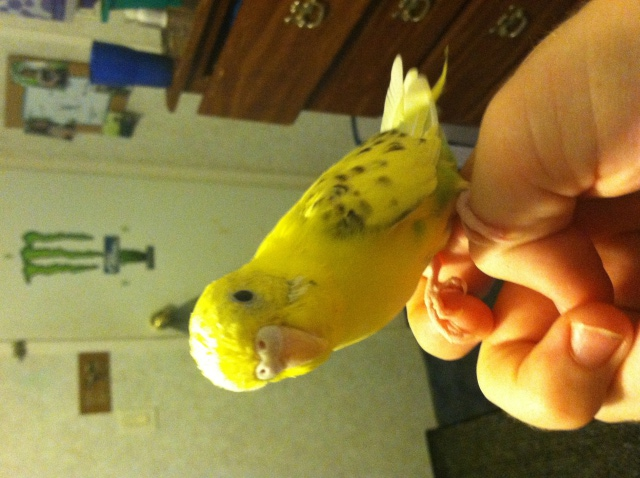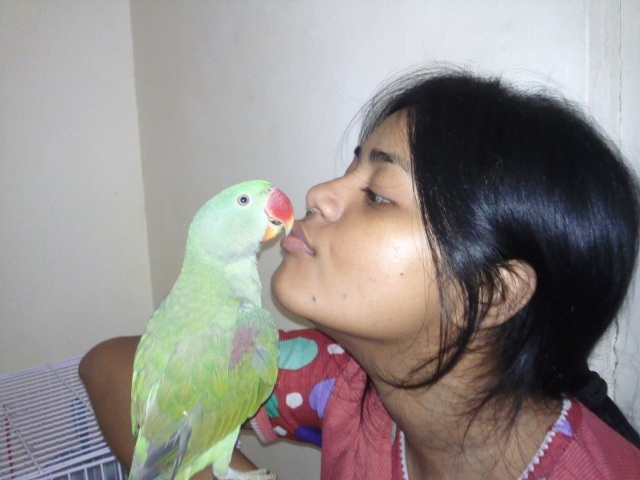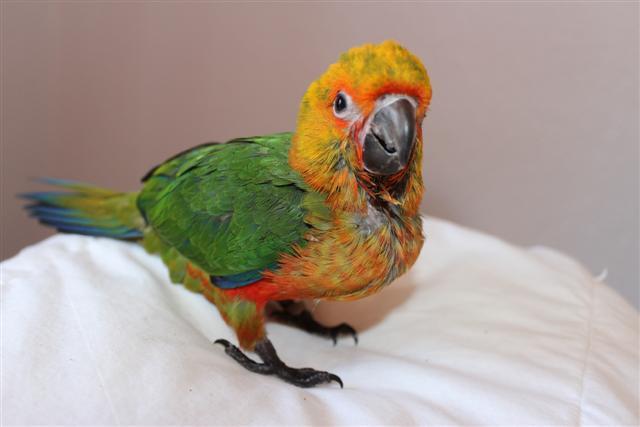QuestionWe have had a male and female ringneck parakeet for approximately 4 years. They were approximately 10 years old when we got them (per the pet shop). They shared the same cage peacefully until about a year ago when the male started attacking the female. We now have them in separate cages immediately adjacent to each other.
My question: the female has recently laid two eggs over the course of about one month. Obviously they are not fertilized. Is it possible that the previous aggressive behavior was caused by wanting to mate? And would you recommend trying them out in the same cage again?
AnswerHi, Dori,
I'd say no about the aggressive behavior. If the male wanted to mate with his female, he wouldn't have been aggressive toward her. A precursor to mating is usually the male feeding his mate beak-to-beak and otherwise "loving" behavior toward each other. I'd say perhaps these 2 birds are getting old and probably not as tolerant of each other as they used to be. I've seen this occur many times in pairs of parrots who've been together for a long time. In many species of parrots, the male can become aggressive to his mate, which requires them to be separated. For example, some cockatoos and amazons become aggressive to their mates during breeding season. I've even known some males to kill their females. However, I would like to know how they behave together on a daily basis. Some pair-bonded birds fight over food, water, perch space, etc. With her having laid eggs, perhaps she wanted to mate but he didn't. There can be lots of reasons for the aggressiveness. Perhaps it doesn't have anything to do with the female. Has anything changed in the home, such as remodeling work, someone leave the home/someone join the home, new cage, new cage location, are they next to a window where they can see outside (perhaps something outside frightens him). It's really a process of elimination to try and figure out what's going on. You can try putting them together again, depending on how they've gotten along in separate cages next to each other. However, watch them carefully together to ensure the safety of the female. You can also try putting them together for short periods of time each day and/or allowing them outside their cages together to see how things go.
Chrys

 Parakeet gender
Question
Parakeet
Hi, I looked for an expert und
Parakeet gender
Question
Parakeet
Hi, I looked for an expert und
 RE: Indian Ringneck probems
Question
Indy our Ringneck
Thank you for your he
RE: Indian Ringneck probems
Question
Indy our Ringneck
Thank you for your he
 ID Birds
Question
Panama Birds
My uncle served in Panama in 1941
ID Birds
Question
Panama Birds
My uncle served in Panama in 1941
 can i give my parrot chole(chana) called in hindi
Question
my little chaddi alexa
dear sir,
can give chan
can i give my parrot chole(chana) called in hindi
Question
my little chaddi alexa
dear sir,
can give chan
 Jenday Conure Weaning?
Question
Castor the Conure
Hi
I have a 9 week o
Jenday Conure Weaning?
Question
Castor the Conure
Hi
I have a 9 week o